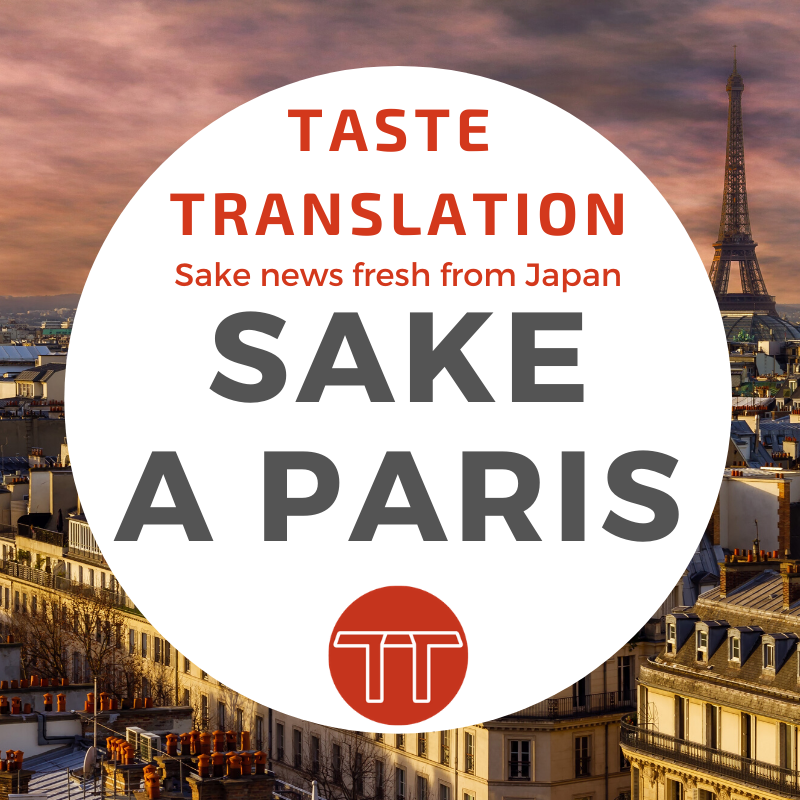
Excite News defines “PUNK sake” as made by young brewers who introduce themselves by saying they want to drink a different kind of sake, ignore unnecessary rules and prioritise flavour over all else. They’re the ones who have been breathing new life into the sake world for the last decade. They’re brewing PUNK sake and this is what they have to say.
Reporter and interviewer Yuki Yokō starts by asking readers if they’ve heard of WAKAZE, a startup brewing up a storm in the sake world.
Their sake with its innovative flavours and packaged in stylish bottles has collided with the principles of the existing sake world and now they’re trying to make sake an international drink by mounting an assault on the French market. (Part 2 of 2)
Yokō follows up by asking if he’s saying that staying close to the characteristics of the rice is important. Imai takes a long view, arguing that for about the last 100 years sake making has focused on milling the rice more and more and producing a “clean” style with no individuality. This “milling ratio”, grinding and polishing the rice, means that the more you mill the less off-flavours you get and the more refined the final product. In some ways it’s more of a luxury product so you can charge more for it, but there has been a reaction against that in recent years.
Milling the rice means scraping off and throwing away the rice farmers have given their all to grow, or to put it another way, anyone can make good sake from highly milled rice. So the question now for him is how to make delicious sake without milling the rice. [As a side note, most breweries I’ve been to throw nothing away. The powder generated by milling rice is kept and used as a pickling ingredient, as rice flour, or as animal feed.]
WAKAZE also has striking bottle design, something new for sake, Yokō notes. Imai explains that they want bottle designs that make their products easy for customers to choose, and that bring a bit of colour and festivity to their table. The design for the ORIENTAL bottle includes motifs taken from its botanical secondary ingredients, joined up into a circle that expresses harmony. CHAI has the Taj Mahal and elephants to represent India, which are a great talking point.
Yokō asks where Imai’s motivation to make new sake comes from. He replies that his family run a sake brewery in Gunma Prefecture, Hijiri Shuzō. He was born into a brewing family, so seeing how people have stopped drinking sake these days is incredibly frustrating. He racked his brains since his student days for some way to help the sake industry as a whole. Unfortunately, the industry is dispersed all over the country, so to get past that he aimed to make WAKAZE an international sake.
And sake is more and more popular overseas now too, Yokō adds. Making sake international will take more than exporting it from Japan to other countries, Imai argues. The important part is having it made all over the world and seen as something local. He wants sake to be made everywhere, in a way that reflects the identity of the local community.
In the same way as wine is made all over the world, asks Yokō. Yes, Imai answers. In the same way as you have wine from Bourgogne, or from California, or from Greece, he wants sake to spread around the world through being a local drink. Although anything made outside Japan is not strictly speaking nihonshu, so they talk about sake instead. [Japan secured a Geographical Indication (GI) in 2015 that means only sake produced in Japan from rice grown in Japan can be called “nihonshu” or “Japanese sake”.]
There needs to be more overseas brewers for sake to spread. That’s why they decided to try making sake in France. Their aim is to become a role model, and hopefully people all around the world will see what they’re doing and be inspired to try brewing themselves.
That’s an ambitious plan, notes Yokō. Imai argues that they’ve already built their brewery in Paris and started brewing. Paris is the food capital of the world, and France is a wine nation. The French will be harsh judges. But that’s why they went there.
It would be no different from exporting if they brewed the same sake as you get in Japan. They want to try making something that can only be made in Paris. They’re using French rice and local hard water for brewing, plus local wine yeast. It will be a real challenge. Using hard water is completely different from soft water, it makes things really difficult. But Imai finishes by inviting Yokō to come and have some of their sake in Paris as soon as it’s ready.
WAKAZE, Inc. is a startup founded in 2016 with a vision of “bringing sake to the world”. They use contracted brewing to develop and sell their own products, including Orbia (aged in wine barrels) and Fonia (flavoured sake made with botanicals and spices). Obtained a brewing licence for “other” drinks in July 2018 and opened a doburoku brewery in Sangenjaya, Tokyo, with attached restaurant.
Links
- Original article (Japanese, Excite News, 2 December 2019)
- Wakaze (Japanese/English)
- Wakaze France (English)
- Hijiri Shuzō (Japanese)
Want Japanese sake news straight to your inbox?
The translations/summaries of Japanese language news articles and other content provided on this site are part of a personal project to increase the amount of information about Japanese sake available in English.
Coverage of an organisation, product or event does not in any way imply approval or endorsement.
All translations/summaries and other content are © 2017-2021 Arline Lyons.